[ad_1]

“It’s quite surreal,” said Stella McCartney backstage after her autumn/winter 2022 show in Paris on top of the Centre Pompidou. She was describing the strange experience of presenting a fashion collection during Russia’s violent invasion of Ukraine. Her show was bookended with a pair of statements intended to address the situation: it opened with the voice of President John F Kennedy reading his 1963 “A Strategy of Peace” address and ended with John Lennon’s song “Give Peace a Chance”. In between, there were some clothes.
That was a common feeling through Paris Fashion Week, which drew to a close on Tuesday. The glamour of celebrity attendance and lavish parties was in shorter supply, with events — such as a dinner planned by Victoria and David Beckham to launch the former’s latest fashion collection — cancelled in respect. “It just doesn’t feel right to be holding a celebration,” Victoria Beckham said.

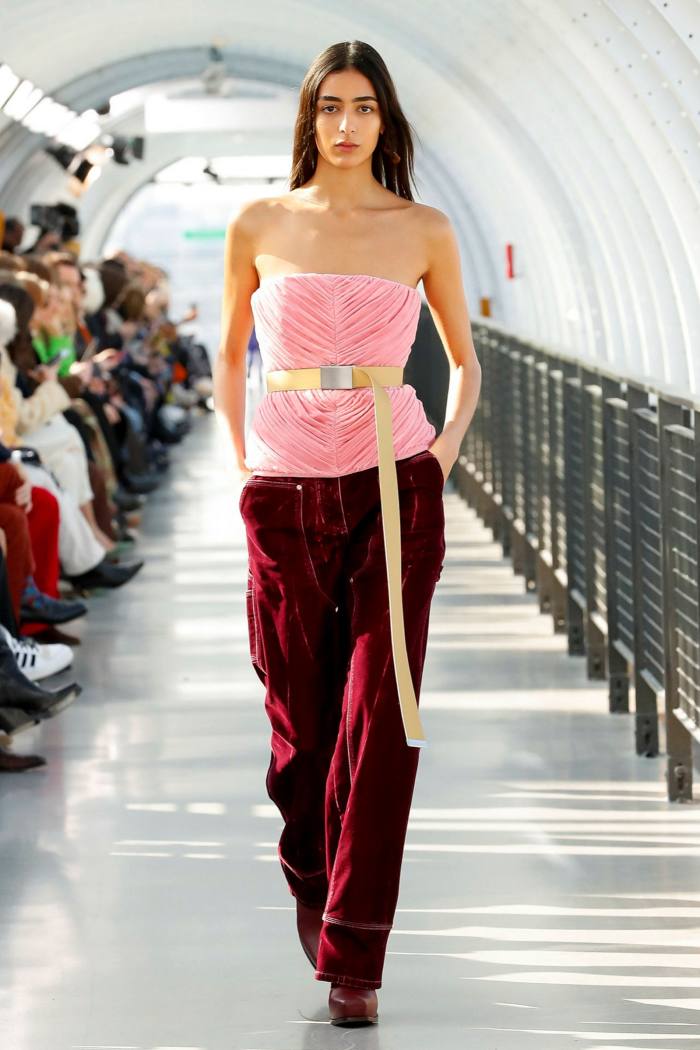
The surreal aspect that McCartney highlighted was oddly echoed in many designers’ actual creations. These garments were designed and manufactured months ago, so the strangeness they were both reacting to and sometimes reflecting was more accurately that of the final throes (one hopes) of the pandemic.
At Hermès, models passed through de Chirico-style colonnades clutching sliced-up Kelly bags like Dada sculptures. The Vtmnts show had a whiff of Magritte via double-breasted suits printed with puffy clouds. Bruno Sialelli showed a Lanvin minaudière that looked like a giant bejewelled tulip blossom.




Given the restrictions we’ve had around physicality over the past two years, there was also a bunch of touchy-feely stuff going on, like the savage hunks of fur folded around waists and hanging off dresses in Jonathan Anderson’s Loewe collection. There were also brief dresses moulded from leather or plastic, and others with fetishistic 3D-printed shoes trapped inside, or suspended from puckered Salvador Dalí-esque lips. Heels were embedded in resin balloons, bulging and seemingly ready to pop. The sense of danger was eerie. The Loewe team — Anderson included — wore whorls of yellow and blue ribbons pinned to their chests in support of Ukraine.
So did Pierpaolo Piccioli when he bowed at the end of his Valentino show. He began by reading a statement of reflection. “Our thoughts go to those who are suffering. We see you, we feel you and we love you,” he said. The Valentino show was surreal too: Piccioli opted to use a single shade of pink — a newly devised Pantone named “Valentino Pink PP” — to colour about 90 per cent of the collection, bar an interlude of all black.
In a preview, Piccioli compared his clothes to the slashed canvasses of Lucio Fontana in his use of monochrome to focus on texture and form. So although the clothes were all pink, their surfaces were giddily varied, puffed with flowers, nodding with bows, crunched with thick sequins or in lustrous taffeta or metallic brocades. Shown on a matching cerise catwalk, these clothes gave the impression you were viewing the world thought rose-tinted glasses, an antidote to the strictures of the recent past.
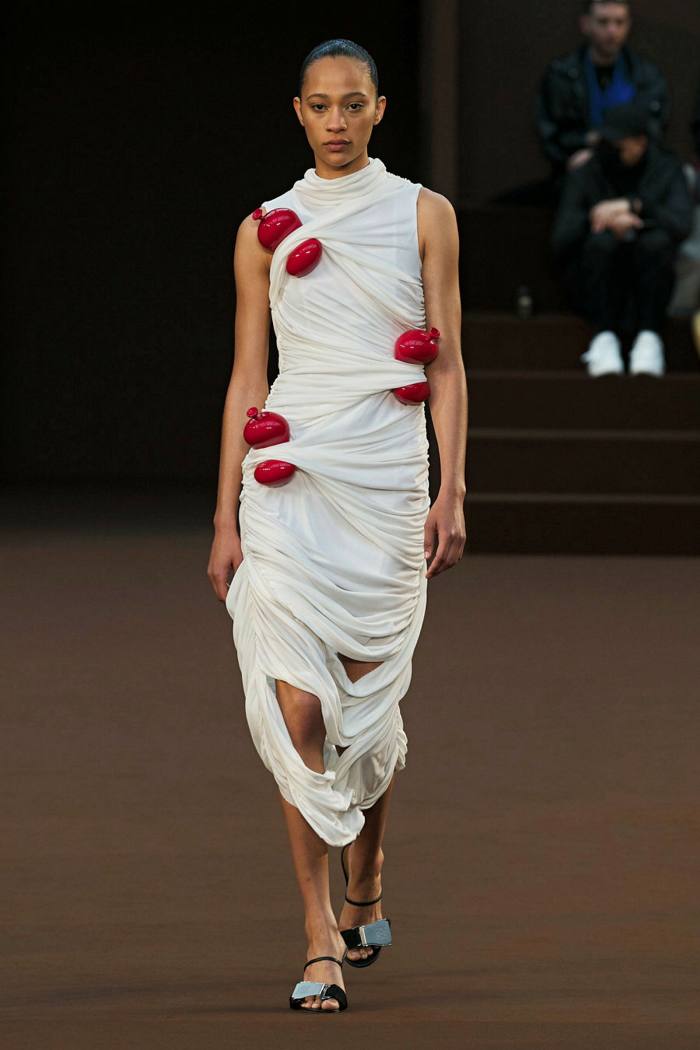
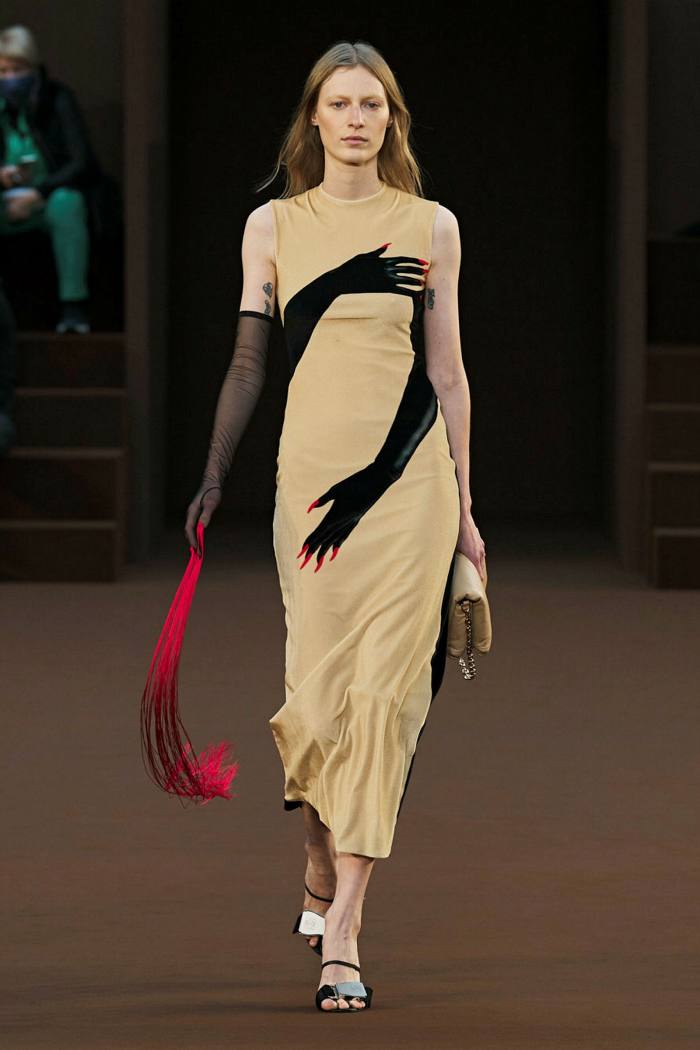


In another all-encompassing environment, Virginie Viard’s Chanel collection was inspired by the label’s signature nubbly bouclé tweed, shown in a venue smothered in the stuff, with models meandering down a blue catwalk that seemed to evoke the fabric’s namesake, the River Tweed in the Scottish Borders. It was fashion show as Gesamtkunstwerk, where an audience watched Chanel tweed coats while sitting on Chanel tweed stools clutching invites decorated with — you guess it — Chanel tweed. It was not an escapist fantasy but a demonstration of branding, ownership and power. It didn’t distract you from the world situation but it proposed plenty of stuff for people to buy.
The same was true of Miu Miu, where Miuccia Prada doubled down on her wildly popular spring/summer 2022 show. That collection comprised menswear-ish pieces chopped and reconfigured into new garments: pairs of trousers slashed into micro-skirts became unexpected runaway hits. Shown last October, it has since achieved remarkable near-ubiquity on magazine covers. This new collection re-approached that concept, chopping up clothes to alter proportions, layering and belting brief skirts and shirts, and with shrunken leather jackets over argyle knits. What was new was the casting, including models of every gender identity.

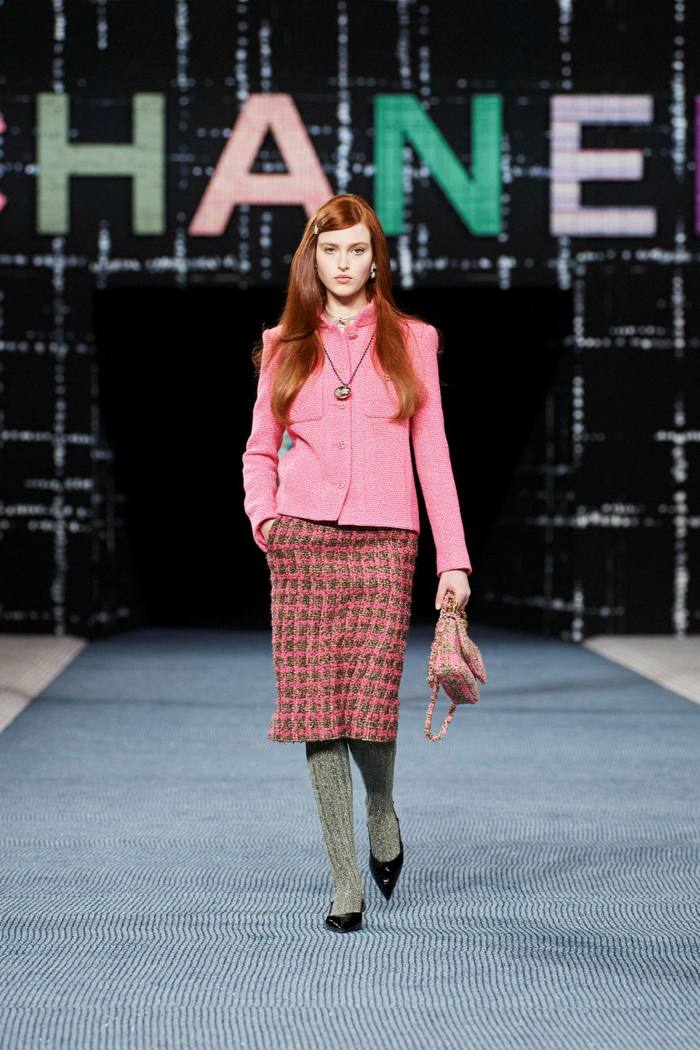


Fashion isn’t always about selling stuff. It’s great as a dream-weaver, an alternative to harsh news headlines. The label of the moment is Schiaparelli, whose founder Elsa Schiaparelli was ideologically in bed with the likes of Salvador Dalí and who designed topsy-turvy clothes that, in their discomfort and displacement, mirrored the European political landscape of the 1930s. She once proposed a shoe as a hat, made a suit with pockets that resembled a chest of drawers and printed a dress with a giant lobster. She was a huge success in America, from whence the current Schiaparelli designer Daniel Roseberry hails.
This season, he showed dresses with gilded chains draped like external ribcages on little black dresses, curly wool jackets with trompe l’oeil corsets embedded in the front, gloves with six-inch attenuated fingers and another shoe as a hat. These were clothes that made you smile, made you forget what was going on in the outside world a little — and then made you feel guilty for doing so.
Dreams and distractions, songs of peace and gestures of love are all well-meaning and good. But does fashion have another duty, to reflect what is going on in the wider world? And, when what’s going in the outside world is war, should fashion tackle that subject matter?
Some designers referenced it obliquely — Nicolas Ghesquière dedicated his handsome Louis Vuitton collection to youth “in all its vivid romanticism, inspiring idealism, hope for the future, for a better world”. Proportions were oversized, as if clothes had been bought a few sizes too big, like frugally purchased school uniforms intended to outlast a teenage growth-spurt. The final outfit was in the Ukrainian flag’s shades of yellow and blue.

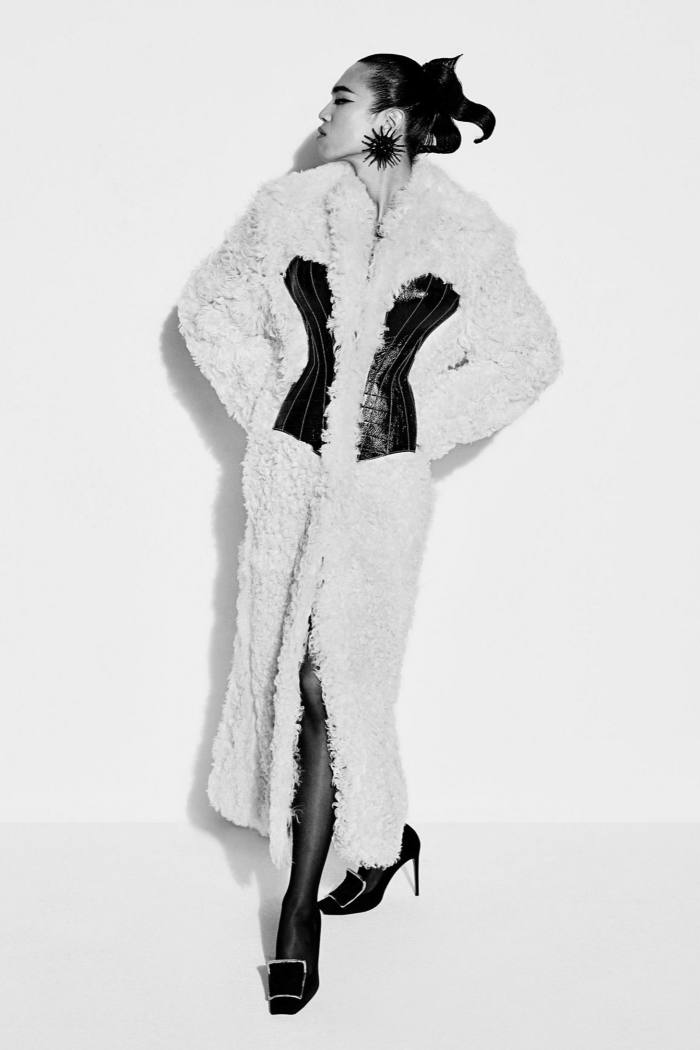


So were the final two outfits in the Balenciaga show by Demna Gvasalia — a yellow tracksuit, followed by a pale blue fitted dress with elongated train. But there ended the similarities between Balenciaga and pretty much every other show in Paris. If other designers were gentle in their reaction to the unfolding political situation, Gvasalia smashed into it, head-on. He hauled the fashion press out to an aircraft hangar outside Paris, pressed its nose to the glass of a circular chamber in which he whipped up a Citizen Kane-worthy, larger-than-life snow globe, an electrical storm crackling overhead as models trudged through an imitation blizzard whipped by very real wind in a Sisyphean quest to show us their clothes.
Context is everything. The complex scenography had been planned for months, Gvasalia explained backstage, as a reaction to climate catastrophe. “The set design was about ‘what will snow mean in the future’ . . . Maybe in 50 years, people will have to go to places to have an artificial experience of certain weather conditions that we take for granted,” he explained.


Discussing this collection, Gvasalia was visibly emotional, shaken. That’s because this show was his own “Rosebud” moment — he and his family lived in what is now the breakaway region of Abkhazia, formerly part of Georgia, and were among the quarter of a million Georgians who were expelled from their homes between 1992-93. They fled over the Caucasus mountains and on to Germany.
Backstage, a critic commented on the struggles of the models, battling the wind inside Demna’s dome. They were difficult to watch. “That was very deliberate,” he said. “I was seeing myself. Walking the path from 30 years ago, when I was in a shelter. Like some other 10-year-old Ukrainian boys and girls, with their parents. Not knowing when the ceiling will fall on your head.” He read a poem of love at the start of the show, in Ukrainian. “It’s a poem to Ukraine to tell it to be strong, to focus on love,” the designer said. “The people I wanted to give this message to will understand it.”
The show provoked conflicting responses from online viewers, where messages of support were punctuated by those asking if a fashion show was the place to comment on atrocities. Certainly, no other designer went there — but then, no other could.
“Fashion somehow doesn’t matter right now to me,” Gvasalia said — and though his message was delivered through a fashion show, the imagery it created transcended the medium. In years to come, it will probably prove to be the single fashion show we remember from this very, very surreal fashion season.
Follow @financialtimesfashion on Instagram to find out about our latest stories first
[ad_2]
Source link




More Stories
Exploring the Ever-Changing Fashion World
Key Insights into the Fashion World Revolution
From Runway to Real Life in the Fashion World